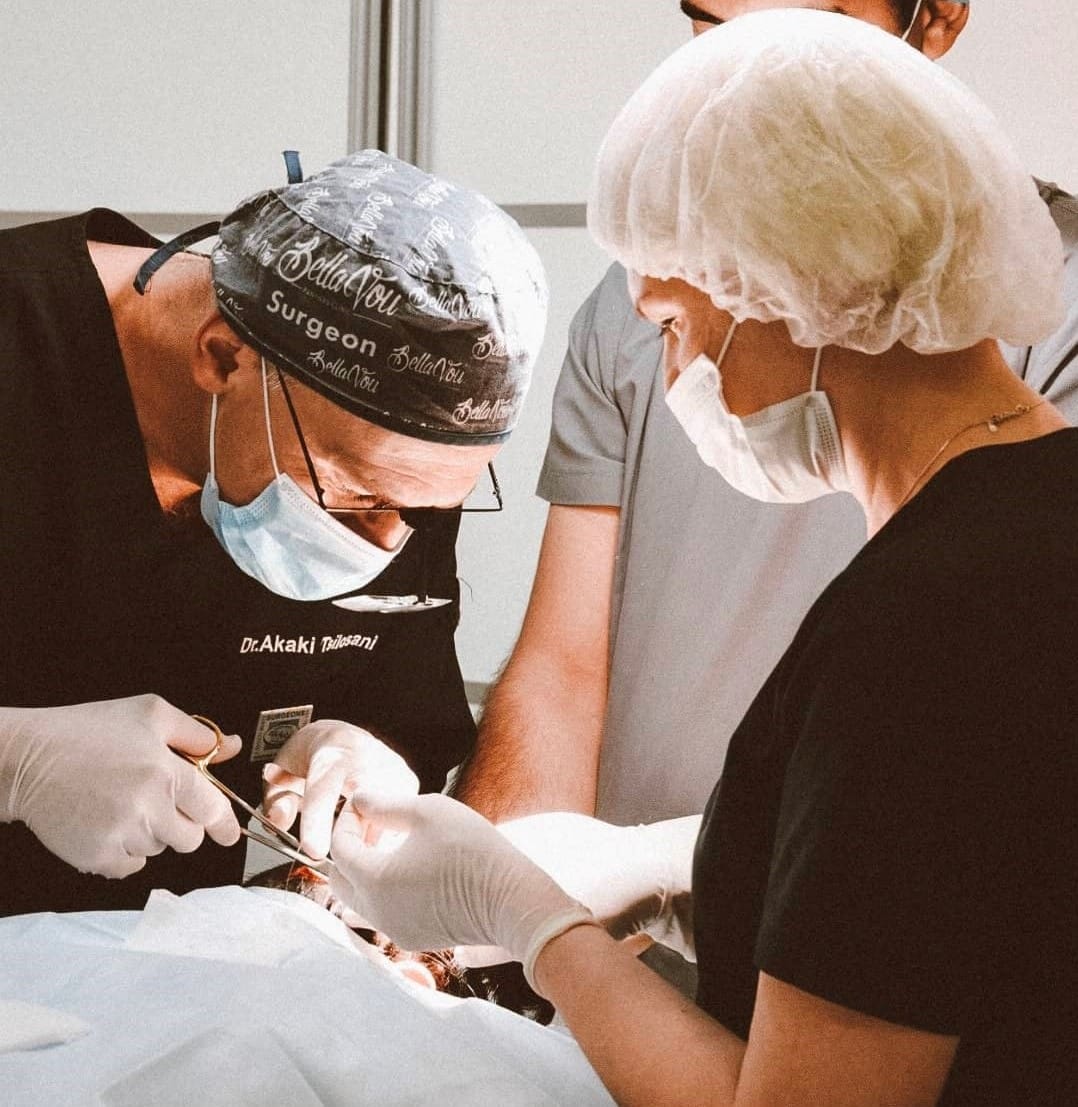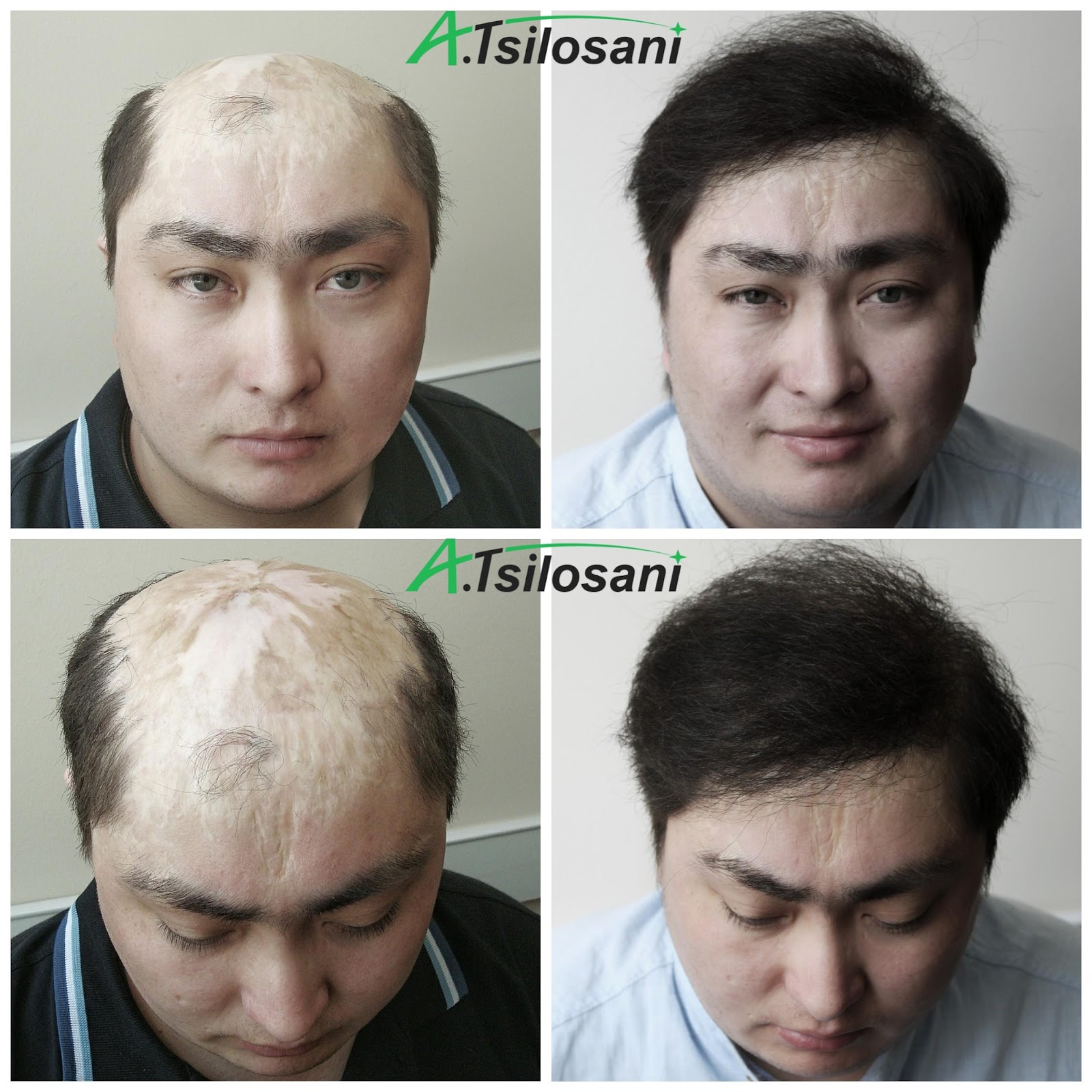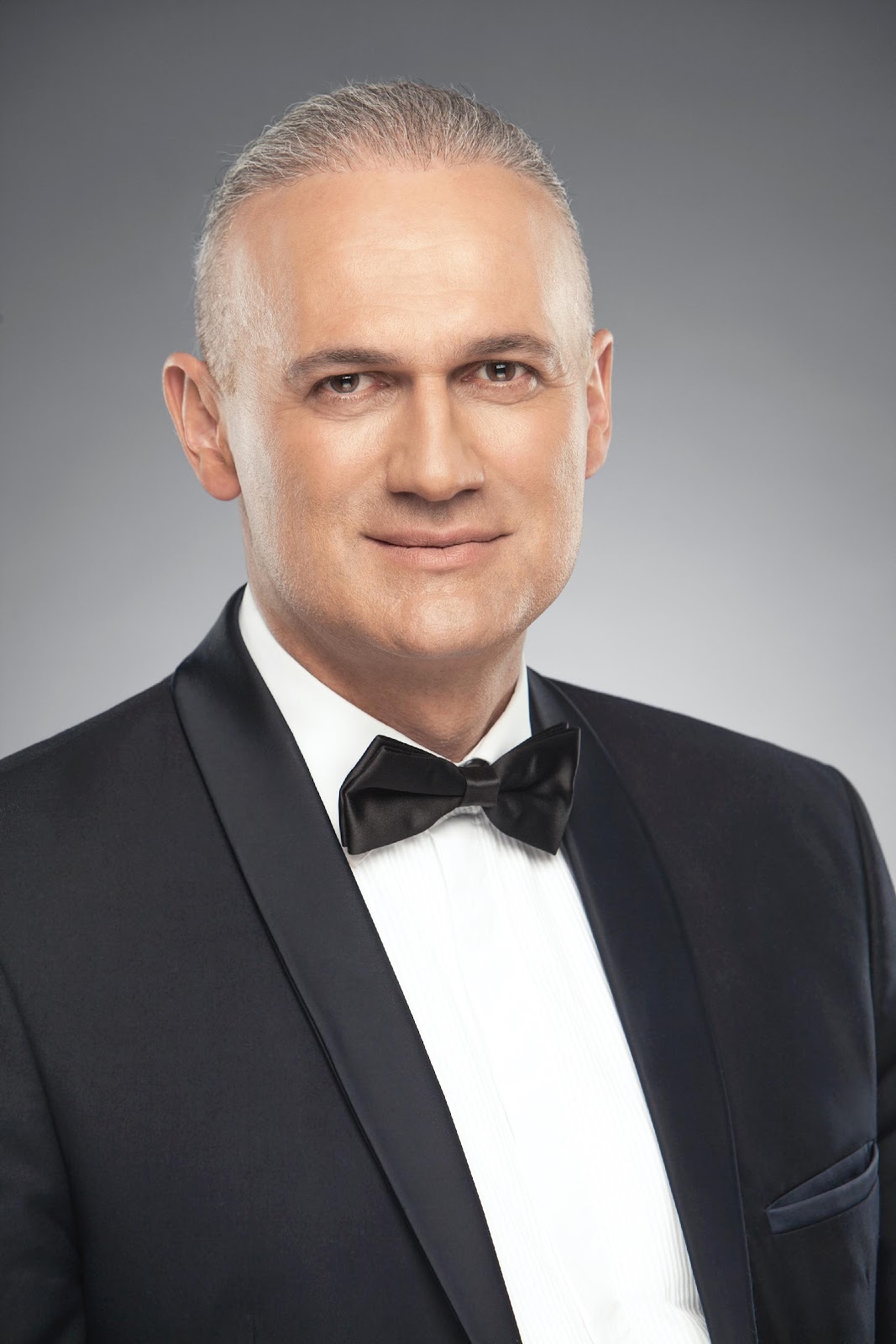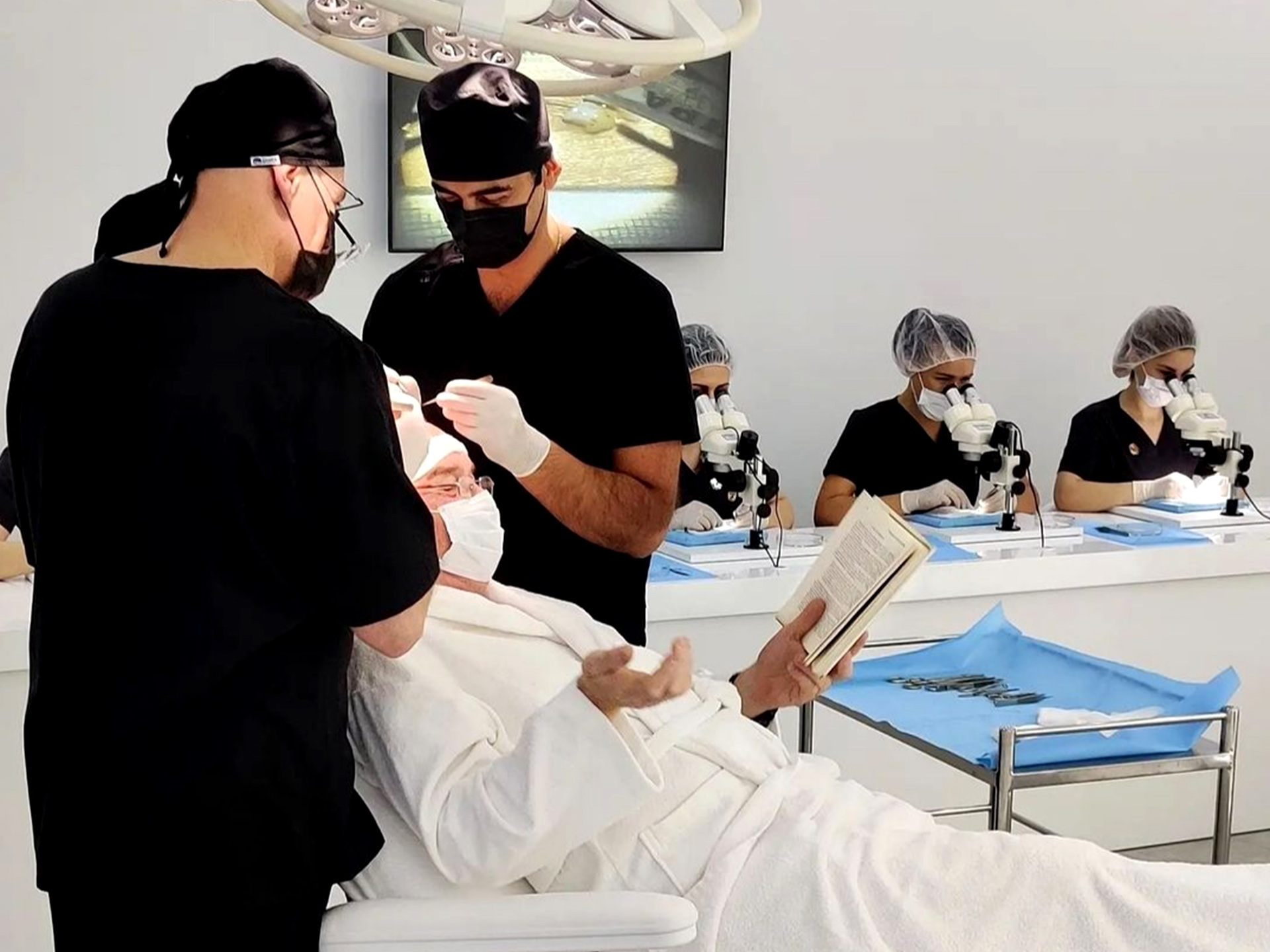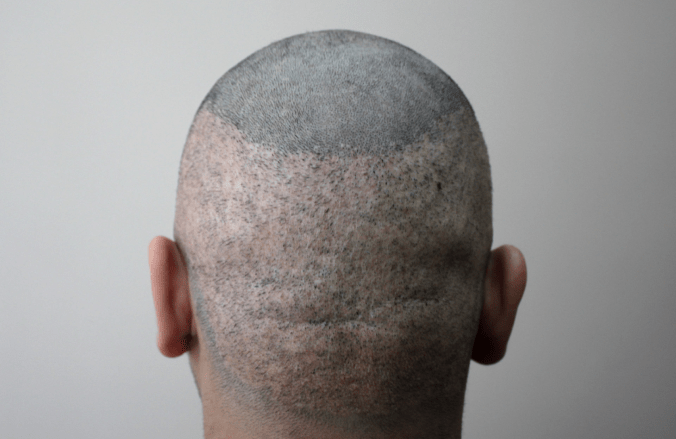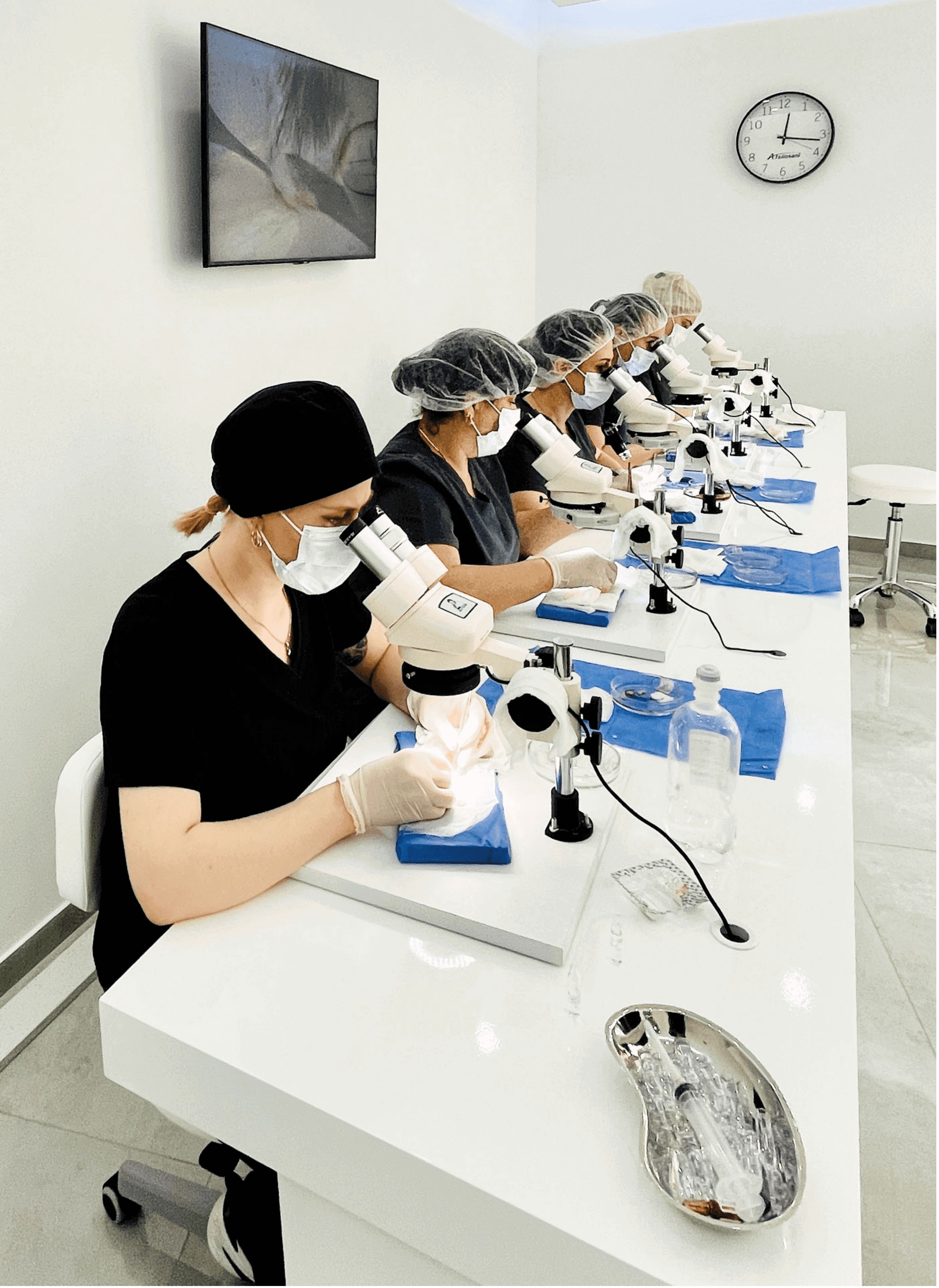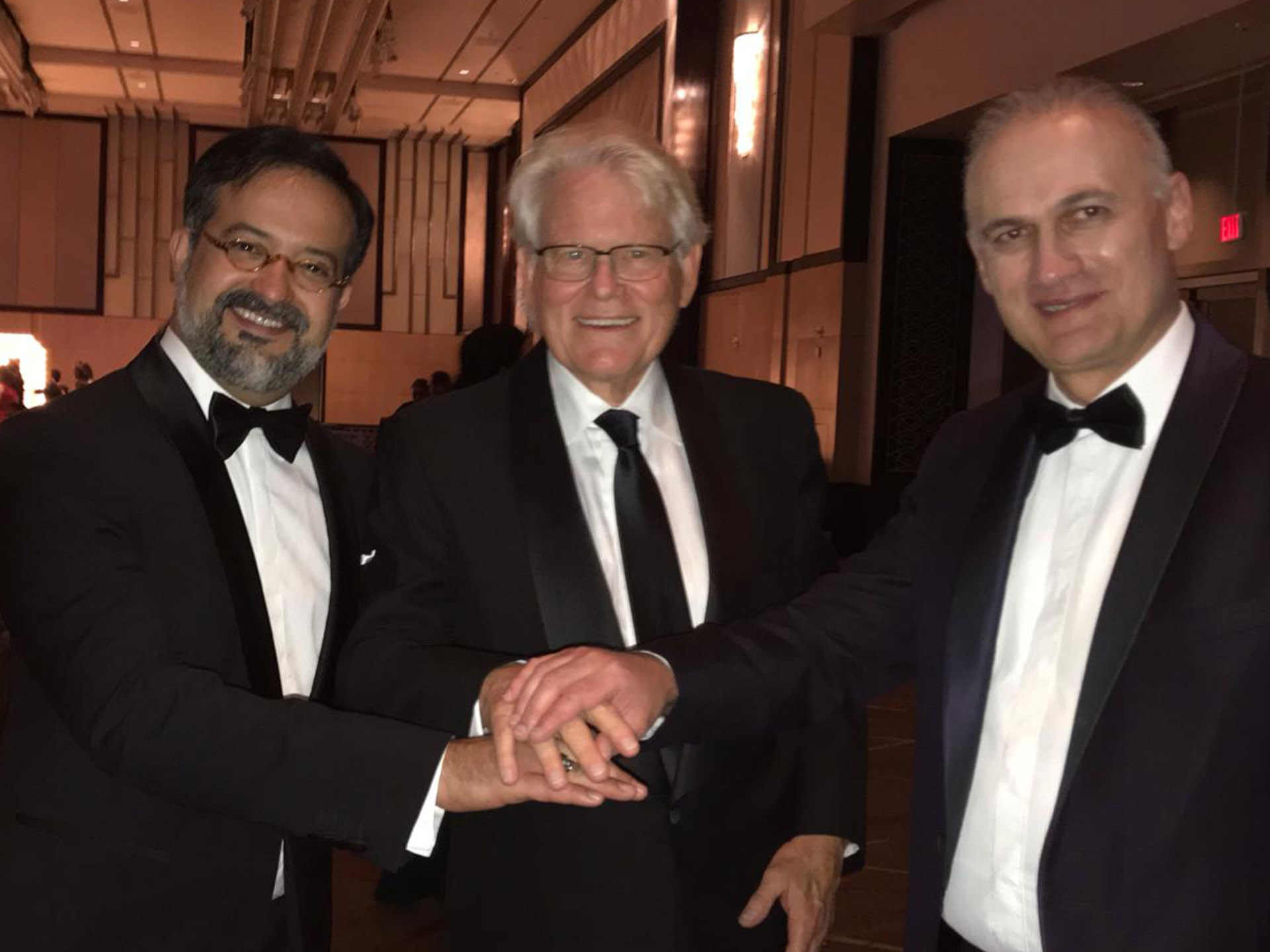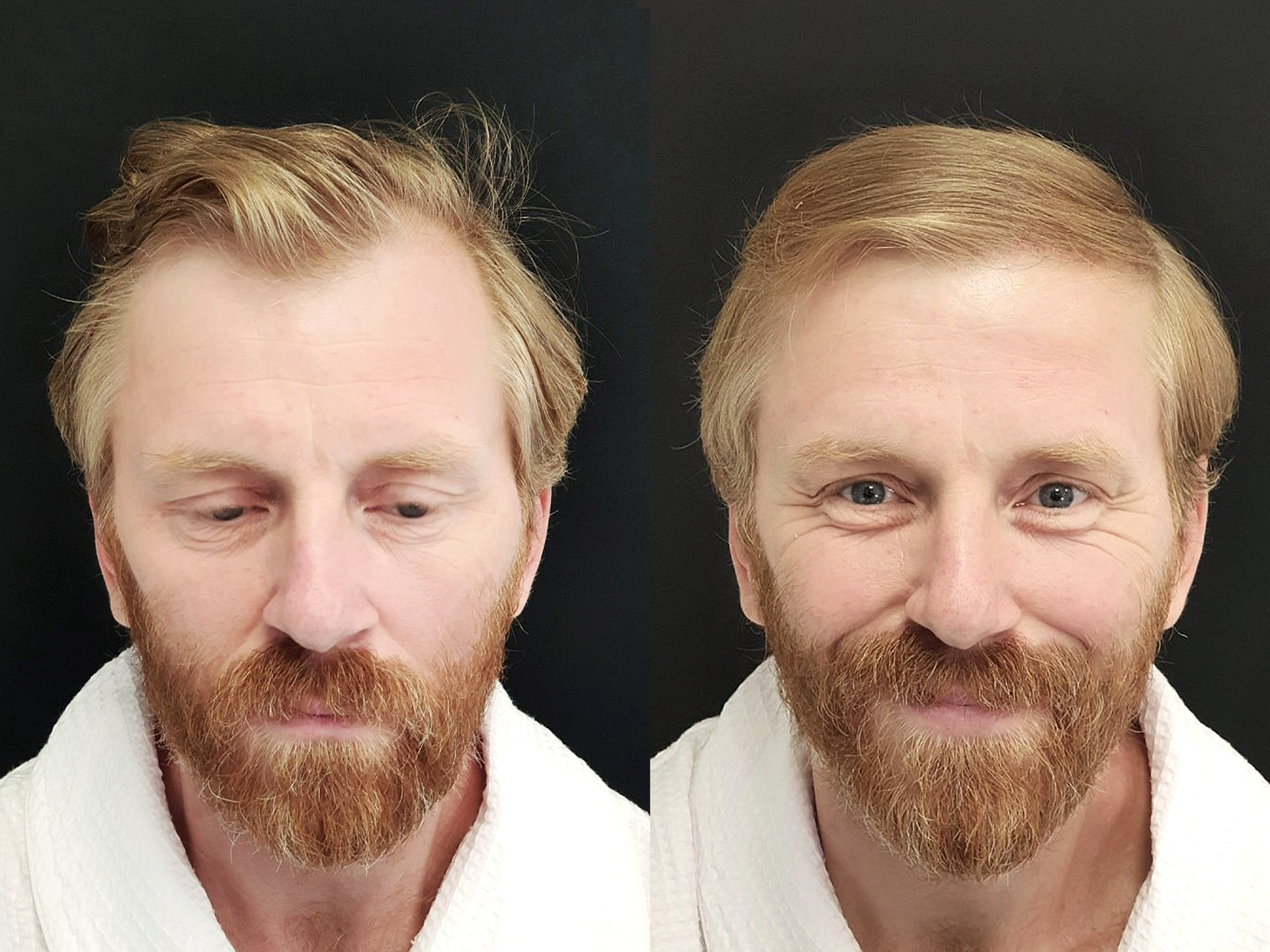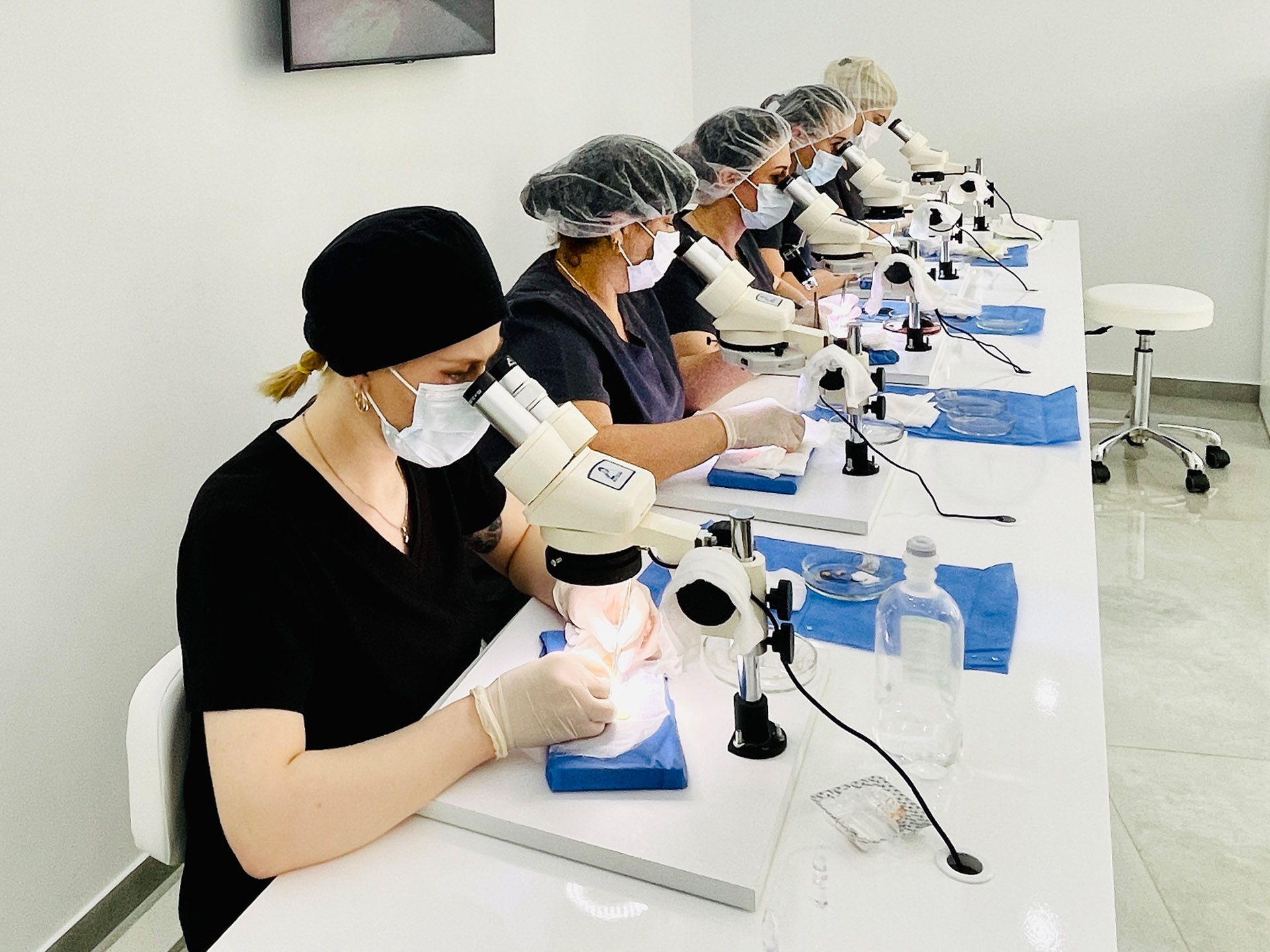
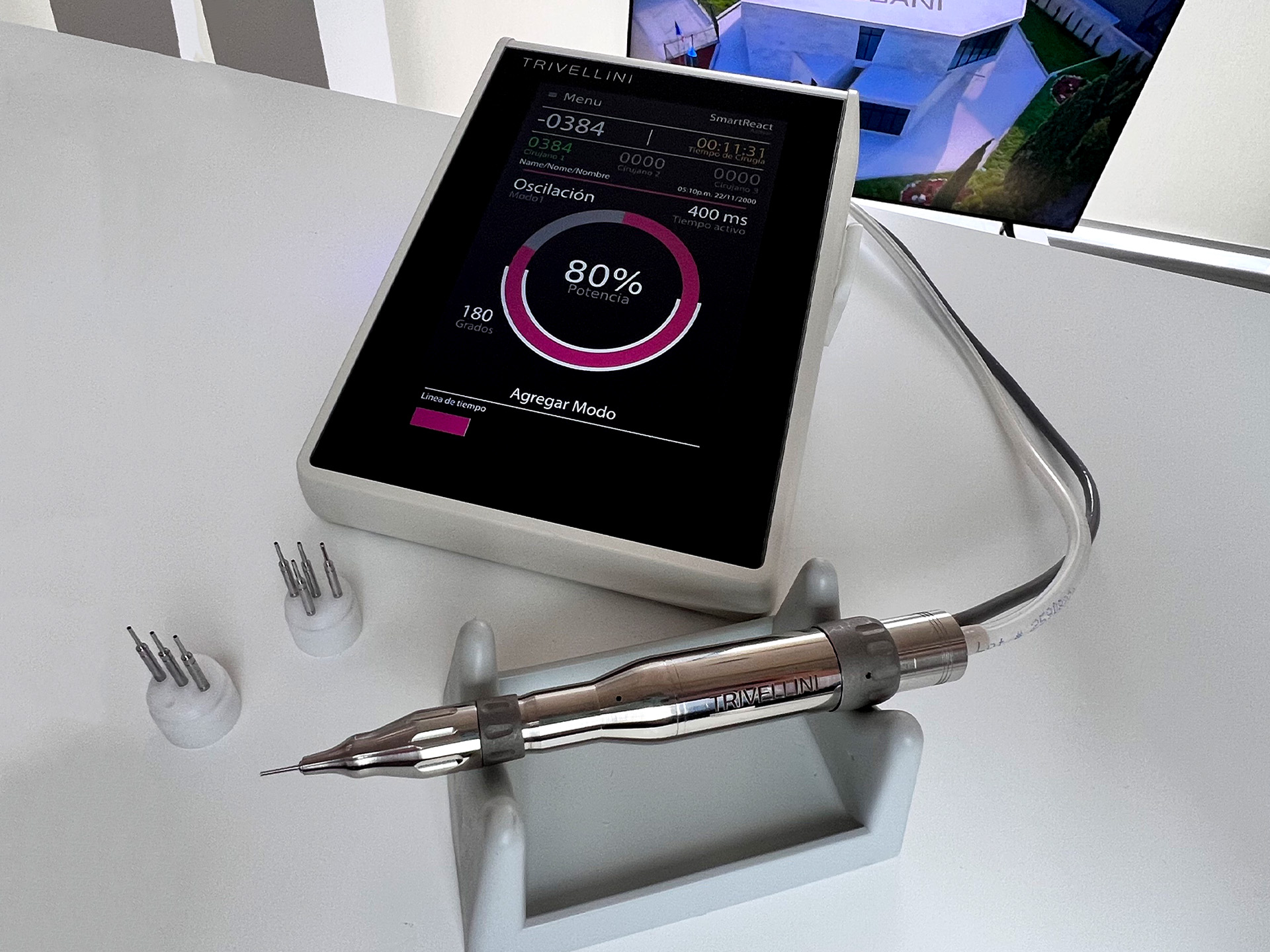
FUE (Follicular Unit Excision)
FUE (Follicular Unit Excision) is a minimally invasive sutureless method of hair transplantation. The donor material is taken from the back of the head or other parts of the body (beard, chest, groin, legs, etc.) in the form of individual follicular units (grafts) using small (up to 1 mm in diameter) twisting punches.
During FUE, the surgeon makes circular, superficial (2-4 mm deep) incisions with the punch around each follicular unit after which the surgeon's assistant extracts them one by one using special forceps. Small wounds (up to 1 mm in diameter) left after the excision of follicular units are quickly healed leaving dot-like micro scars. The main advantage of this technique is that, unlike the FUT method, FUE leaves no linear scar on the back of the head.
FUE is considered to be the most modern hair transplantation technique, but in fact, it is far from that.
The FUE era began with the famous publication by American hair transplant surgeons William Rassman and Robert Bernstein: "FUE Procedure - Minimally Invasive Surgery for Hair Transplantation" in the journal "Dermatologic Surgery" in 2002. After this article, the whole world started performing FUE. However, the first FUE procedures far predate Rassman and Bernstein. Dr. Shoji Okuda and Dr. Hajime Tamura used exactly the same technique during World War II. But unfortunately, their invaluable experience was lost because of the war. At the end of 20th century Dr. Ray Woods began using this technique, but did not present or publish his work. Thus, Rassman and Bernstein are considered to be the pioneers of the FUE method.
FUE is by far the most common and popular method of hair transplantation due to its obvious advantages:
1. With the FUE technique, there are no incisions or stitches on the donor area and therefore no linear scar remains. This allows the patient to wear a very short haircut if desired.
2. FUE is much less invasive than FUT, thus the postoperative period is more comfortable for the patients.
3. With FUE follicular units can be harvested not just from the back of the head, but also from other parts of the body (chest, beard, groin, legs, etc.). This becomes extremely valuable when there is a poor donor supply on the back of the head.
4. During the patient’s first hair transplant procedure, the FUE technique allows the surgeon to selectively extract grafts with more hair (follicles) to achieve a better result.
However, the FUE technique also has many disadvantages:
1. Despite the lack of a linear scar on the back of the head, we cannot call FUE a completely “scarless” technique. After the FUE procedure, dot-like micro scars remain in the places where grafts were harvested. Since the hair won’t grow in these micro scars, the hair density on the back of the head naturally decreases, and with large-scale hair transplants (harvesting 5000 grafts and more), depletion of the donor area or scarring may occur.
2. Due to the intrinsic nature of FUE, even the most experienced surgeons using the most modern equipment (punches and machines) will have a higher follicular transection (cutting, damage) rate than during the FUT procedure.
3. Classic FUE procedure requires complete or partial shaving of the hair (on the back of the head only). Although we often perform FUE without shaving any hair, this technique is more labor-intensive, time-consuming, and expensive. If the FUE procedure is performed by an experienced surgeon, the cost of FUE is always higher than FUT.


